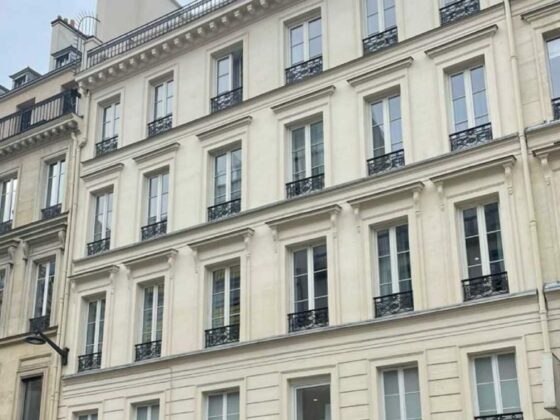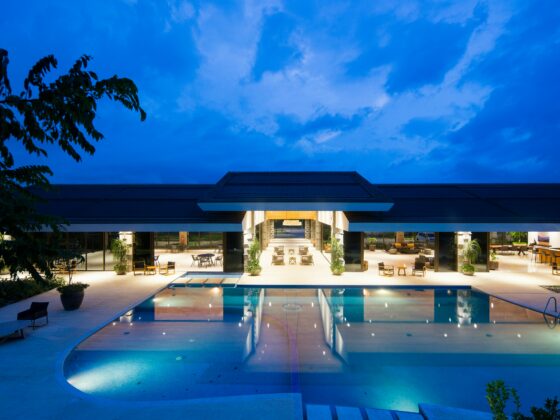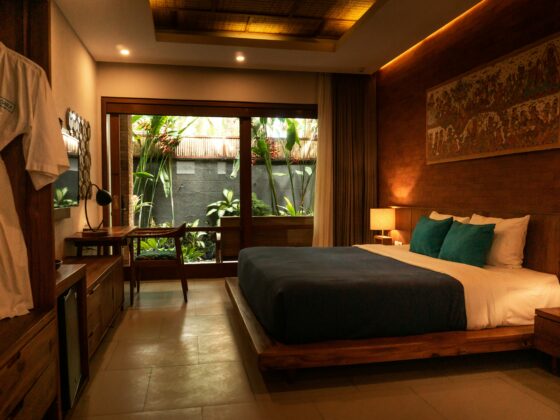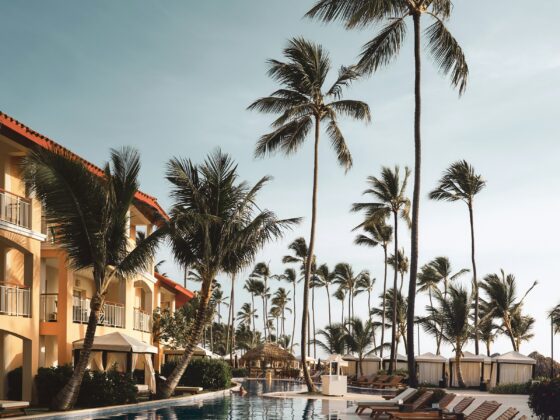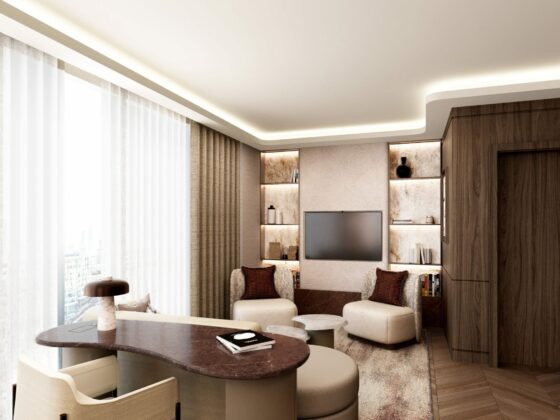South Carolina-based studios SDCO and Basic Projects have overhauled a seaside restaurant in Charleston with a nostalgic design that extends across everything from interiors to memorabilia.
Contemporary details feature throughout the redesigned Sullivan’s Fish Camp, but are interwoven with retro elements to create an aesthetic that respects the restaurant’s long history.
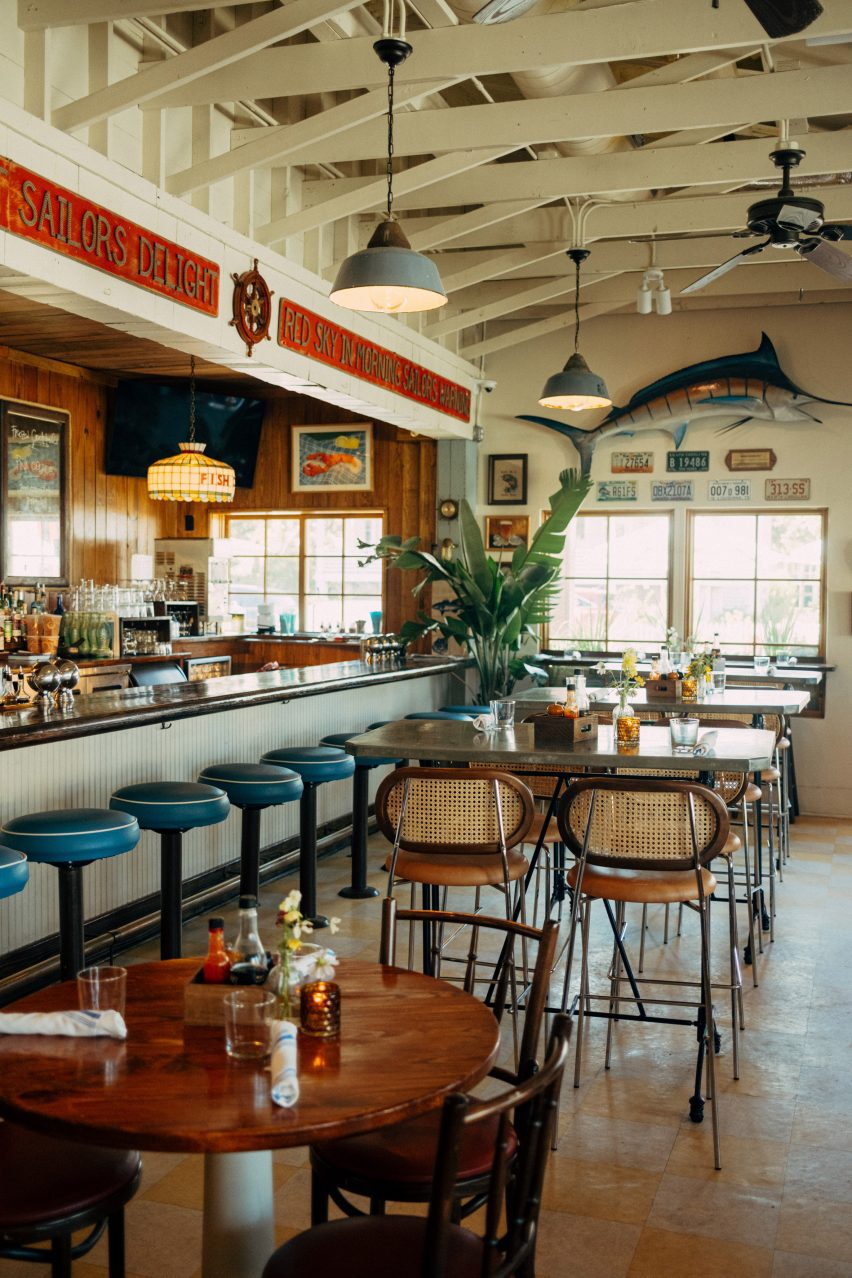
Located on Sullivan’s Island, at the entrance to Charleston Harbor, the family-owned diner has been serving cold beers and seafood to locals and beachgoers for over 35 years.
Amy Pastre and Courtney Rowson of brand strategy studio SDCO worked closely with Kate and Ben Towill of interiors studio Basic Projects to bring a cohesive visual identity throughout.
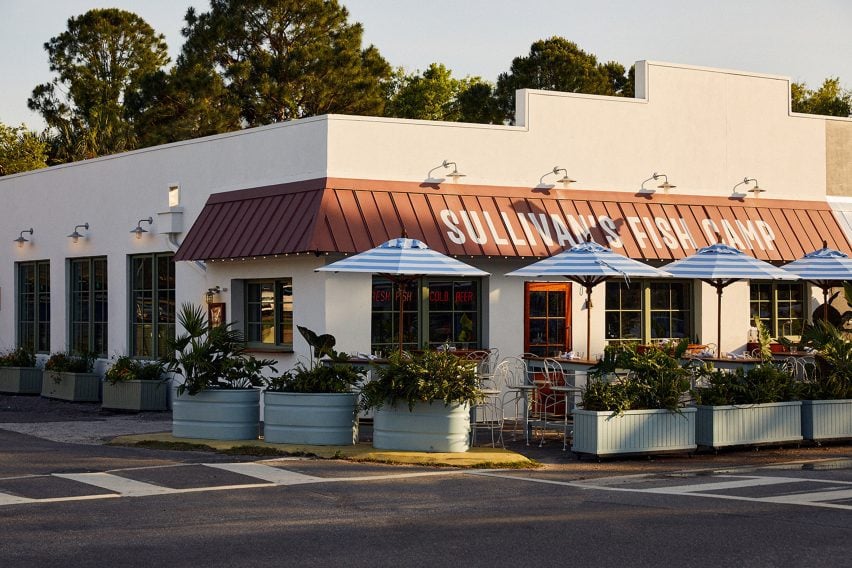
Bold typography, cartoon-style illustrations, vintage art and furniture, and playful messaging all feature in the reimagined restaurant experience.
“The design intent was to create a world that conjures the delight and affection that generations of beachgoers had for the original, family-owned restaurant,” said Pastre and Rowson.
“Some details feel modern, some nostalgic. Experienced together, guests can’t be sure if it’s 1982 or 2024.”
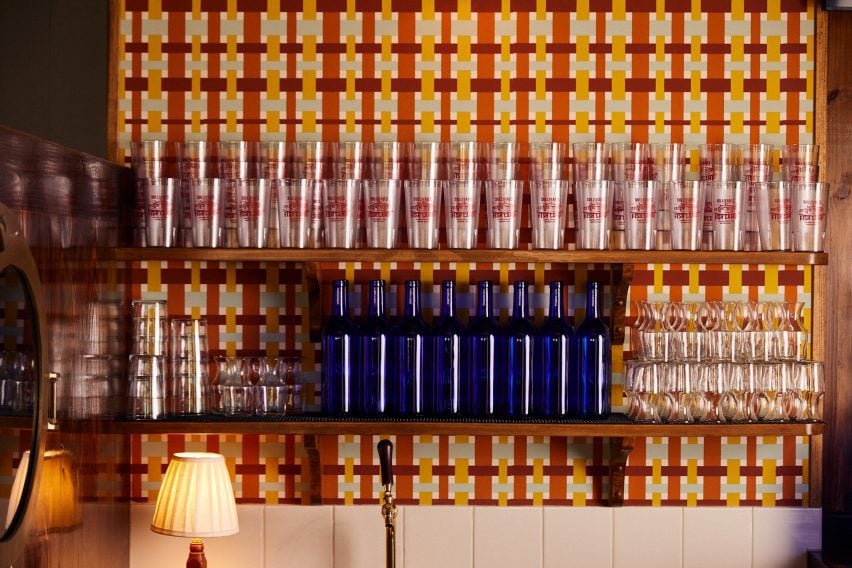
On the outside, Sullivan’s Fish Camp is spelt out in large hand-painted letters across a projecting red roof canopy, identifying the restaurant as a local landmark.
Other graphic-design identifiers include drawings of the building’s exterior and two hand-drawn characters: a “cheery flounder” and Captain Sully, a “salty sea captain-meets-fish”.
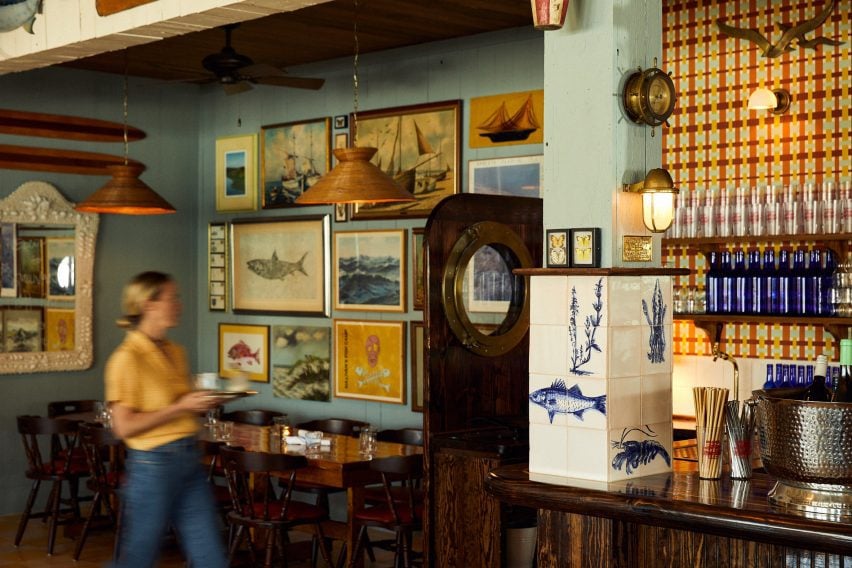
The restaurant’s interior walls are covered in artworks that continue the seaside and maritime themes, from a stitched portrait of a fisherman to a lobster painting by local artist Katherine Dunlap.
Commissioned works include fish illustrations by “Carolina legend” Duane Raver, whose work also features on the placemats, and a large sculpture of a marlin fish.
“It was important to preserve what felt inherently right for the story and space,” said Pastre and Rowson.
“We wanted to pay homage to seaside fish camps while bringing modernity to the brand and experience,” they said. “No corner was left untouched.”
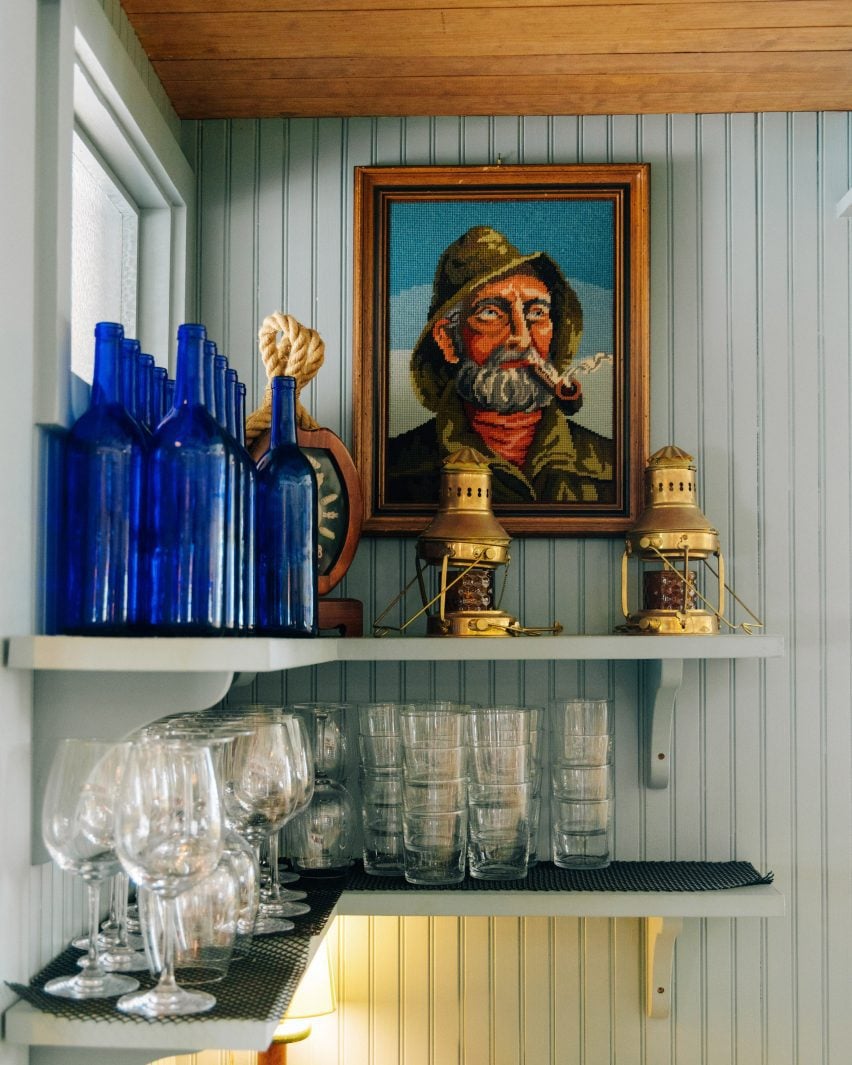
The designers commissioned a local joiner to build furniture elements, including tables, seating banquettes, and a counter that frames the merchandise display and walk-up ice cream window.
Basic Projects sourced many of the other furniture and lighting elements from antique markets, as well as from Ebay and Etsy. A stained glass pendant lamp is one of the most striking finds.
“My background is in film set design, so I loved every bit of the sourcing,” said Kate Towill.

Durability was an important consideration; heavy rain and high tides can cause the restaurant to flood, while beachgoers bring plenty of sand in on their feet.
“We welcome sandy and salty beachgoers,” said Towill.
“The floors are VCT (vinyl composition tiles) and all the wood is pressure-treated and sealed with marine-grade sealer.”
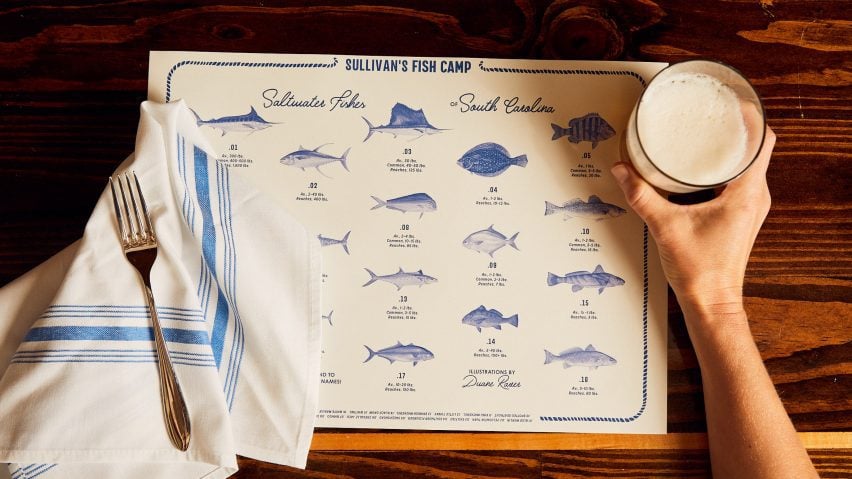
SDCO designed an extensive range of merchandise, including key chains, hats, tote bags, sweatshirts, T-shirts, bottle openers and bumper stickers.
Custom design also extends to the tableware.
Cups are emblazoned with the Sullivan’s Fish Camp branding, while plates feature scalloped seashell illustrations that reference the border of the original 1988 menu.
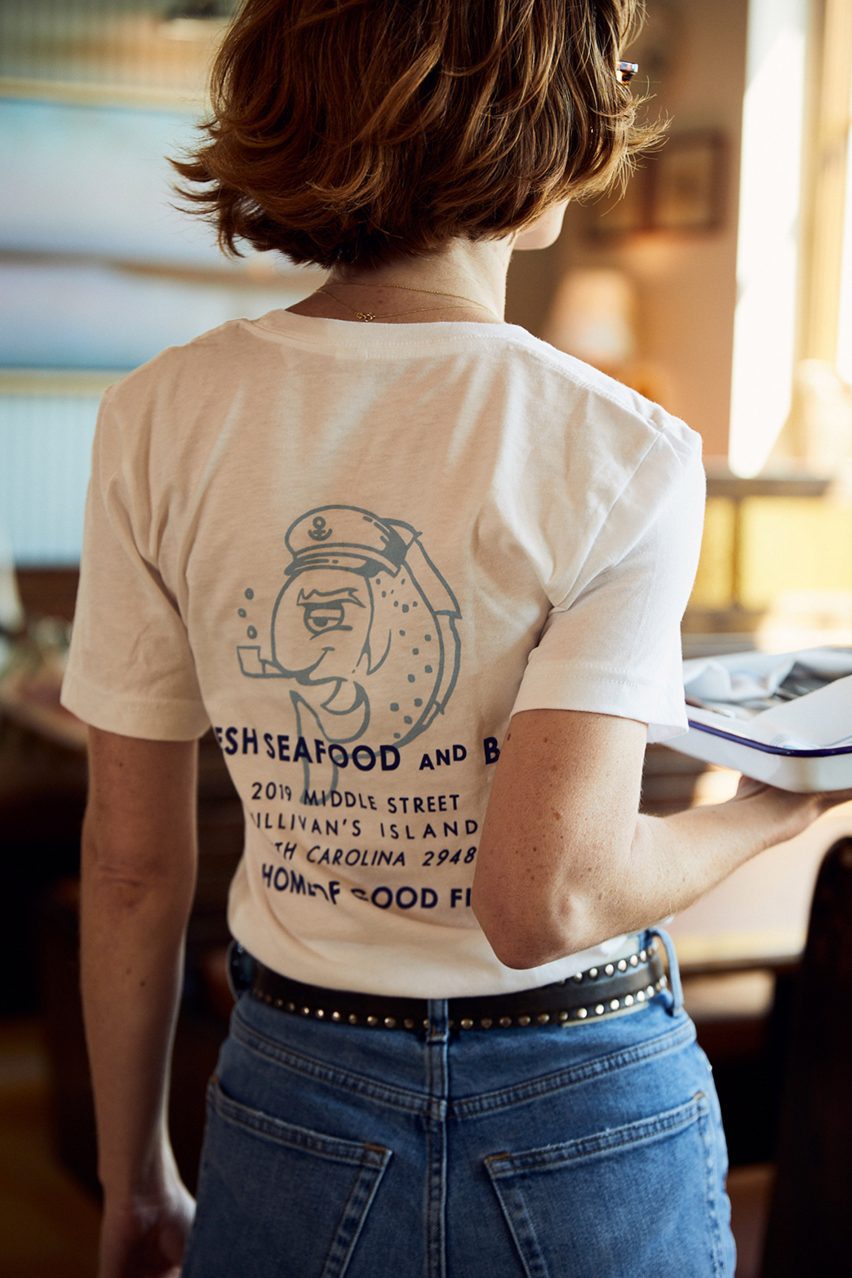
“The result is a feel-good space that quite literally takes you on a journey through food, drink, design, nostalgia and souvenirs that create indelible memories,” added Pastre and Rowson.
Sullivan’s Fish Camp is the latest in a series of notable design projects in Charleston, a town that has seen an influx of creatives over the past decade.
Others include boutique hotel Post House, also designed by Basic Projects, and the newly opened International African American Museum, designed by Pei Cobb Freed & Partners and Moody Nolan.


